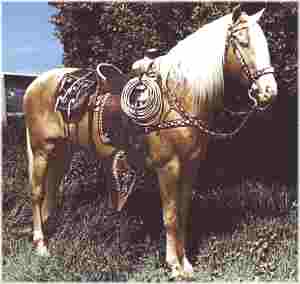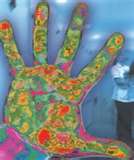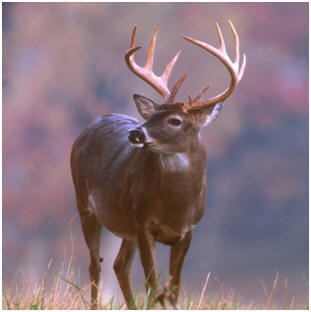We are heading into a New Year, always a time for reflection, nostalgia, plans and hopes for the future. So I can’t help but blend some things together. Hope for the future of our animals- so much of that hope rests on our youth. Yet, there is a dearth of young people involved with horses. Asking “why” brought me to my own travels in the love of the horse. Could it have been all those Saturday morning shows with Fury, Flicka and Trigger?
So for a bit of meaningful fun, today’s post is in honor of those Hollywood Heros who brought us to drink from this well of equine passion. Let’s talk about Trigger.
From his birth at a San Diego ranch in 1932, the 15’3 h., Golden Cloud (named in honor of the ranch manager, Roy F. Cloud) showed his talents for learning. Around age 3 he was sold to Hudkins Stables, an outfit that supplied mounts to Hollywood. (Wow, an entire industry of suppling equine steeds to Hollywood, those were the days!) By 5 (1938) he was carrying around Olivia de Havilland in The Adventures of Robin Hood. 1938 seemed to be GC’s year. He was picked out of a line of five other horses by a new and upcoming movie star, Roy Rogers. The two “joined-up” quickly and GC’s quick intellect and footwork inspired a supporting role member to comment, “he sure is quick on the trigger.” The name “Trigger” stuck.
Roy Rogers was no Hollywood air-head. He had lived on a farm in Ohio and ridden an ornery Thoroughbred to school. He spent his childhood through the depression working the family farm and odd jobs. The guy knew what hard work and want really were. He also knew animals and had a fair judgement of mankind.
Roy and Trigger’s debut exceeded the studio’s expectations and Roy was sent on a personal appearance tour. He quickly realized that the young audience wanted the duo, not just him. Smartly, Roy started bringing Trigger along and even smarterly (why can’t I make that word up?) Roy purchased Trigger. Remember Trigger is about 6 now. His purchase price was $2,500 at a time when $200 would buy you a darn fine horse. Roy, did the installment plan (he was only making $75 a week) and it took several years before he owned the stallion outright. But he had control.
It was Trigger that allowed Roy to decline pressure from the studios to do roles he objected to. They might tell Roy Rogers to walk, but even the studio honchos recognized that children were a prime movie audience and they LOVED Trigger. Trigger was Roy Rogers’ Ace.
I have to give a lot of credit to Roy here. Yes, there are probably sinister things about him, but I don’t want to know. I just want to deal with what I see. Roy made sure to take Trigger to all of his personal appearances, parking himself, the horse and the fancy rig outside the event hall so that the kids who could not afford a ticket could still meet and experience Trigger’s magic. He also took Trigger to children in hospitals and shelters- is Trigger perhaps the first therapeutic horse? Trigger appeared in all 88 movies Roy made and in all of the more than 100 TV episodes of the Roy Rogers show.
That’s the marketing end. The health and care end puts Roy in equally good light. He knew he could not ask as much of the horse as he did of himself so he quickly purchased two other look-a-likes, “Trigger Jr.” and “Little Trigger.” Of course this was unknown to the audiences at large and Roy, a meticulous record keeper, saved Trigger’s bill of sale, but has no record for the other two (history by design). This is also one of the reasons you may see conflicting information on Trigger’s heritage. It seems one was an American Saddle bred and one was a registered Palomino, but the real Trigger was out of a Thoroughbred sire and a grade mare.
Just an aside here, for anyone dealing with equine identification, take a look at these photos and pick out the distinguishing differences. The real Trigger has only a left hind sock, and his face white extends over the left eye and right nostril, but not the right eye and left nostril. That should be easy to put on a Coggins.
So Roy took good care of his horses, Trigger lived to age 33, he retired to a close by ranch and lived the last 8 years of his life grazing, passing peacefully in 1965. The other two “Triggers” lived into their late 20s. Remember this was in an era where an average horse lived to 15 and making 20 was a “Wow” factor.
So Roy Rogers carefully crafted a Duo, paid attention to his audience, how to reach it, respected that audience and took care of his resources. Something we should always be aware of in our own endeavors to engage the youth and promote the horse.
And the youth were engaged. Trigger had his own Dell Comic Book and Roy had the Roy Rogers Riding Club that kids joined. There were lunch boxes, personal appearances and toys. Trigger was always a part of the story. It was the horse that brought a generation of children to a well of imagination and passion, and we all drank deeply.
When Trigger died, Roy couldn’t bear to part with him, so he had him stuffed in the rearing position. Macabre to some, understandable to others. Who are we to comment on a person’s grief. Trigger was displayed at the Rogers’ home until Roy’s death when Trigger then went to the Roy Rogers museum.
Alas, that museum just closed its doors on December 10, 2009. Trigger goes on the auction block this summer and I truly hope that the Smithsonian, who had an original interest when Roy died, buys the horse for its American memorabilia collection.
Trigger remained a stallion all his life but is reported to have no offspring. (Can a stallion really stay celibate for 33 years?) Could we capture the attention of a generation of youth with an equine Hollywood Hero? It would be a great way to start a love affair.
This is a clip of one of Roy’s personal appearances with a “Trigger.” It a short spot that shows a remarkable horse, a man very comfortable in the saddle and a heart-song for many of us. Enjoy and
HAPPY NEW YEAR.






 We have a lot of deer in New Jersey. Odd to hear, I know. Most people think we just raise asphalt, oil refineries and corrupt politicians. But New Jersey actually has more deer now than it did in colonial times and our property has more than its fair share of the white tails. Although in an old neighborhood near town, we have a bachelor herd of 12 (their antlers are getting REALLY big), and a harem of about 15, that trade tracks throughout the day and night. So I’m pretty comfortable with the creatures. I almost have to push them out of the way to get to my door.
We have a lot of deer in New Jersey. Odd to hear, I know. Most people think we just raise asphalt, oil refineries and corrupt politicians. But New Jersey actually has more deer now than it did in colonial times and our property has more than its fair share of the white tails. Although in an old neighborhood near town, we have a bachelor herd of 12 (their antlers are getting REALLY big), and a harem of about 15, that trade tracks throughout the day and night. So I’m pretty comfortable with the creatures. I almost have to push them out of the way to get to my door. The same is not true for the time we came into bear territory. At that time I had no fear because I didn’t know anything was afoot. But T-man stopped dead, tensed every part of his body and started darting everywhere. Mokes, the cement in every relationship, was just as unhappy. We dismounted and went another way and never saw the bear in person, but saw evidence of it.
The same is not true for the time we came into bear territory. At that time I had no fear because I didn’t know anything was afoot. But T-man stopped dead, tensed every part of his body and started darting everywhere. Mokes, the cement in every relationship, was just as unhappy. We dismounted and went another way and never saw the bear in person, but saw evidence of it. Well, the boys and I are deciding to ride only in mid-day when most of the deer are scarce, (yesterday was late in the day.) And I must admit I will travel with a new level of awareness and a new interpretation for the phrase, “The buck stops here.”
Well, the boys and I are deciding to ride only in mid-day when most of the deer are scarce, (yesterday was late in the day.) And I must admit I will travel with a new level of awareness and a new interpretation for the phrase, “The buck stops here.”